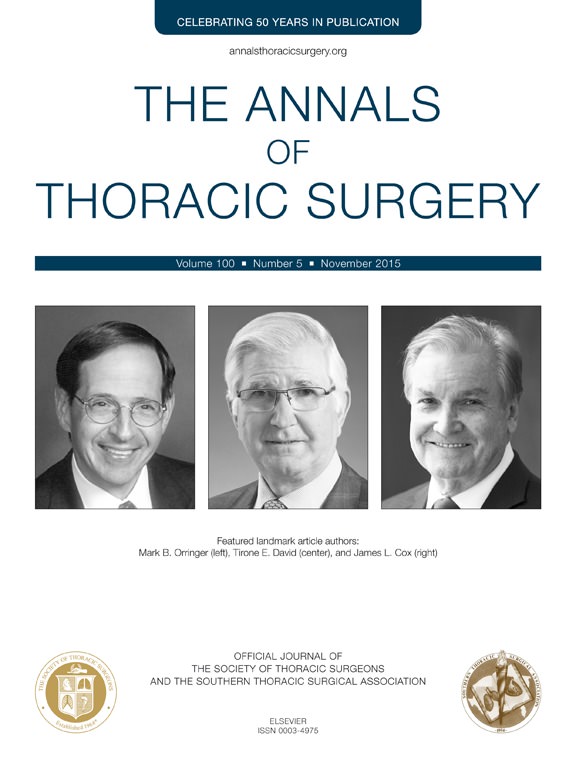The Influence of Mitral Valve Annuloplasty on Left Ventricular Flow Dynamics
Witschey WR, Zhang D, Contijoch F, McGarvey JR, Lee M, Takebayashi S, Aoki C, Han Y, Han J, Barker AJ, Pilla JJ, Gorman RC, Gorman JH III

Background: Mitral valve (MV) repair using annuloplasty rings is the preferred method of treatment for MV regurgitation, but the impact of annuloplasty ring placement on left ventricular intraventricular flow has not been studied.
Methods: Annuloplasty rings of varying sizes were placed in 5 healthy sheep (intercommissural ring sizes were 24, 26, 28, 30, and 32 mm), and three-dimensional phase contrast magnetic resonance imaging (4D flow MRI) was performed before and 1 week after ring placement.
Results: Normal diastolic flow consisted of diastolic intraventricular vortices that naturally unwound during systole. Postsurgical intraventricular flow was highly disturbed in all sheep, and the disturbance was greatest for undersized rings. Ring size was highly correlated with the diastolic inflow angle (Pearson’s r = -0.62, p < 0.1, 95% confidence interval: -0.92 to 0.14). There was a mean angle increase of mean diastolic inflow angle increase of 12.3 degrees (< 30 mm, p < 0.01, 95% confidence interval: 4.8 to 19.6) for rings less than 30 mm. There was an inverse relationship between peak velocity and annuloplasty ring area (Pearson’s r = -0.80, p < 0.05, 95% confidence interval: -0.96 to -0.2). Transmitral pressure gradients increased significantly from baseline 0.73 ± 0.18 mm Hg to after annuloplasty 2.31 ± 1.04 mm Hg (p < 0.05).
Conclusions: Mitral valve annuloplasty ring placement disturbs normal left ventricular intraventricular flow patterns, and the degree of disturbance is closely associated with annuloplasty ring size.
